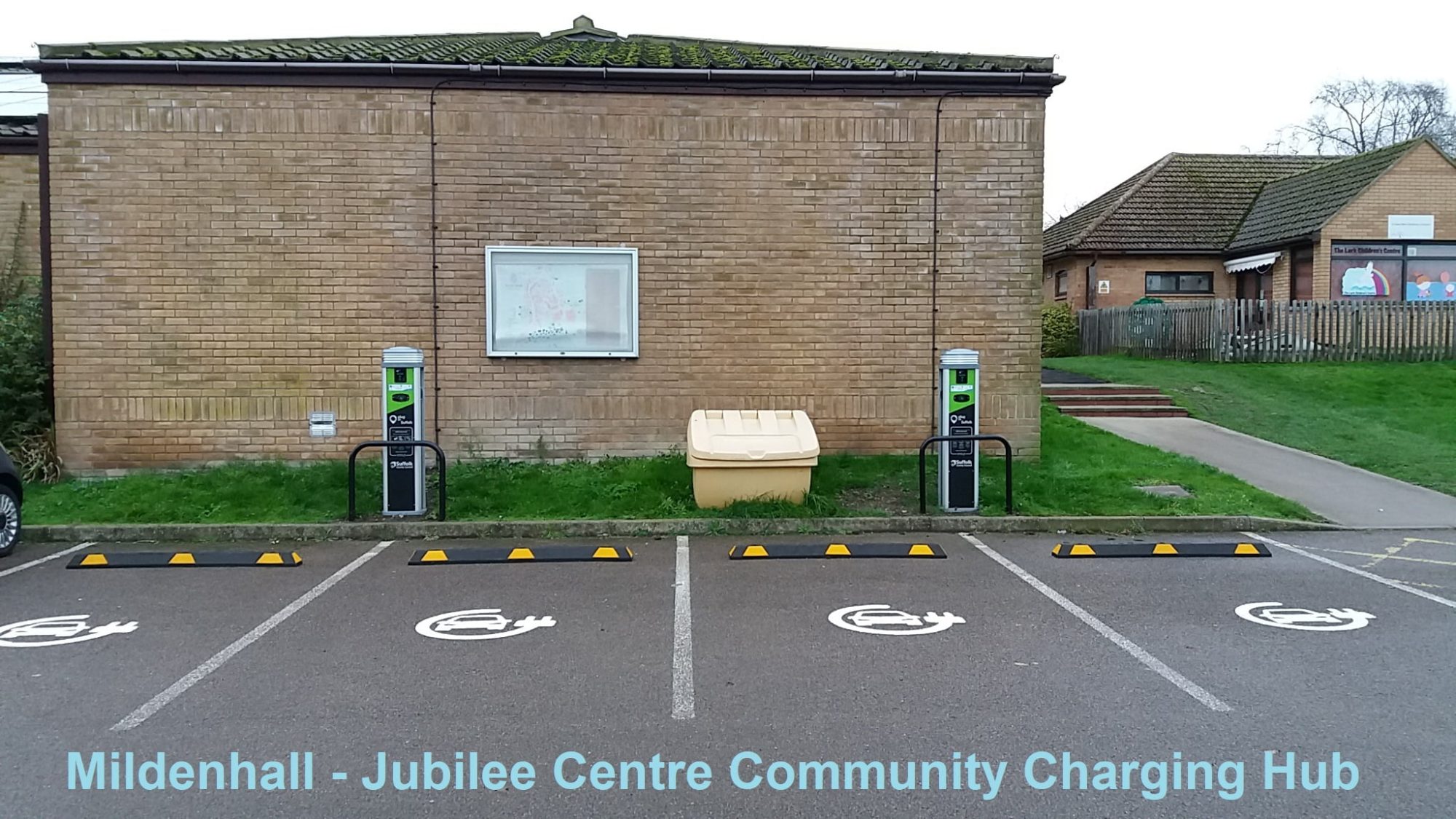Plug In Suffolk's story
Plug In Suffolk Community Grants help smaller, rural communities to fund the initial purchase costs of an electric vehicle charge point. Once the equipment is up and running it becomes the property of the site holder or Parish Council and they operate it like any other asset. The person using the charger pays for the electricity and, depending on the circumstances, there should be a small profit for the community as well.
With an increasing need for electric vehicle infrastructure, many smaller communities would like chargers but do not have the initial outlay to purchase and install the equipment. This can sometimes be overcome by a 'profit share' model, but these are only suitable for areas with high volumes of traffic and many communities do not like the idea of being tied into a long-term contract with one network operator. One of the advantages of Plug In Suffolk is that any visitor can use the charger and pay using the built-in contactless payment system.
The extra revenue created by this initiative leads to positive local engagement which should, in turn, encourage more people to visit an area and more residents to consider the switch to electric motoring. The grant scheme brings with it a huge range of benefits from increasing air quality and reducing carbon emissions to boosting the local economy.
The grant is intended to cover the initial purchase and installation of the chargers. If the grant cannot cover the full amount (perhaps the suggested location is in an awkward position) then discussions will take place for an alternative way forward. Once up and running, the site holder or Parish Council will own the hardware and be responsible for the operation and maintenance of the equipment alongside the supervision of parking spaces and insurance. While any profit over and above operation costs acts as a revenue stream that can be used to support the local community.
Plug In Suffolk is an important part of shaping a low-carbon future across the region, helping people to feel confident about the switch to electric transport, and highlighting Suffolk as a great place to visit for electric vehicle owners.
Useful learnings from Plug In Suffolk
Before starting – We carried out research with both hardware manufacturers and electric vehicle owners. We found that larger manufacturers wanted to push the solutions they already had rather than develop new ways of working (e.g. contactless payment for fast AC chargers for electric cars).
Along the way – It was very helpful to have enthusiastic support from a couple of local businesses involved with EV charging as a contrast to larger organisations who were more reticent to explore a novel use of the technology.
Looking back – When embarking on a project that involves pushing technology forwards, our advice would be to try and secure more than one supply of the hardware and expertise involved. This way, if one delivery partner is no longer able to contribute then the project is not delayed too much.
Plug In Suffolk's metrics
Feedback from the Parish Councils.
Feedback from EV users.







